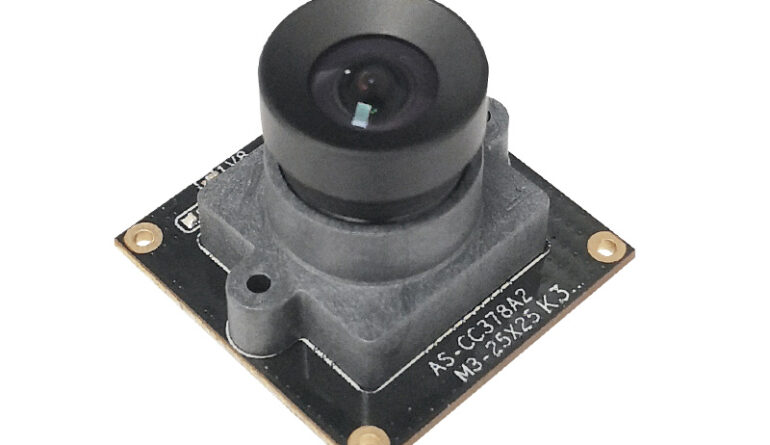Sony IMX273LLR is an active pixel CMOS image sensor with a diagonal of 6.3mm (1/2.9-inch) and 1.58 million effective pixels. The sensor uses 3.45μm unit pixels and global shutter mode to achieve high-resolution, high-speed, distortion-free imaging, which can meet a variety of machine vision applications.
Product features:
Global shutter function
High frame rate
High resolution
Compact structure: 14mm × 14mm
Rich functions: external trigger mode, multiple exposure function, ROI mode, multiple image sensor synchronization function, etc.
Specifications:
Target size 1/2.9"
Resolution 1456×1088
Effective pixels 1456(H) × 1088(V), about 1.58M
Frame rate (fps) 276
Spectrum Black and white
Pixel size 3.45μm
Exposure method Global shutter
Input frequency 37.125MHz, 54.0MHz, 74.25MHz
Sensitivity 915 mV (standard value)
Saturation signal 1001 mV (minimum value)
Aspect ratio 4:3
Interface sub LVDS Serial
Optical black area (OB) Horizontal direction: front 0 pixels, rear 0 pixels; vertical direction: front 10 pixels, rear 0 pixels
Power supply voltage 3.3V / 1.8V / 1.2V
Package 138 pin LGA
Technology Pregius
Dogoozx IMX273 camera module recommendation:
IMX273 Camera Image Sensor FAQs
1. What are the main performance characteristics of the IMX273 camera image sensor?
A: IMX273 is a high-performance image sensor launched by Sony. Its main performance characteristics include:
High resolution: With approximately 1.58 million effective pixels, it can provide clear and delicate images.
High dynamic range: It can still maintain excellent image quality in low light or high contrast environments.
Low noise: Through advanced technical design, the noise in the image is reduced and the image quality is improved.
Global shutter: Supports global shutter function, which can reduce distortion and blur in high-speed motion shooting.
Multiple output formats: Supports multiple output formats such as RAW, YUV and RGB to meet different application requirements.
2. What fields is the IMX273 camera image sensor suitable for?
Answer: Due to its excellent performance characteristics, IMX273 is widely used in various camera equipment, such as:
Industrial cameras: used in machine vision, quality inspection, automated production lines and other fields.
Surveillance cameras: play an important role in urban security, traffic monitoring and other occasions.
Scientific research: also used in scientific research projects that require high-precision image acquisition and analysis.
3. How does the IMX273 camera image sensor ensure image quality?
Answer: IMX273 ensures image quality through the following aspects:
High sensitivity: can capture weak light signals and improve imaging effects in low-light environments.
Low dark current: reduces the noise output of the sensor under no-light conditions and improves the purity of the image.
Precise pixel control: through advanced pixel design and manufacturing processes, ensure that each pixel can accurately reflect light information.
4. How does the IMX273 camera image sensor perform in high-speed motion shooting?
Answer: IMX273 supports the global shutter function, which means that all pixels are exposed almost at the same time during the entire exposure cycle, thereby avoiding the image distortion and blurring problems that may be caused by traditional rolling shutters. Therefore, in high-speed motion shooting, IMX273 can provide clearer and more stable images.
5. How can the IMX273 camera image sensor be integrated with other devices?
A: IMX273 is integrated with other devices through standard electrical interfaces and mechanical structures. Developers can design corresponding circuit boards and systems according to the data sheet and technical specifications of IMX273 to achieve seamless docking with IMX273. In addition, IMX273 also supports a variety of output formats and communication protocols to facilitate data transmission and control with other devices.
6. Will the performance of the IMX273 camera image sensor degrade during long-term use?
A: As a professional-grade image sensor, IMX273 is designed with long-term stability in mind. By using high-quality materials and advanced manufacturing processes, IMX273 can maintain stable performance output during long-term use. However, in order to ensure the long-term stable operation of the sensor, it is recommended that users perform correct installation, use and maintenance in accordance with the requirements in the instruction manual.
7. Does the IMX273 camera image sensor support automatic exposure and automatic white balance?
A: As a high-performance image sensor, IMX273 is usually used in conjunction with corresponding image processing chips or systems. These systems may support advanced features such as automatic exposure and automatic white balance, but whether and to what extent they are supported depends on the specific system design and implementation. Therefore, when selecting and using IMX273, users need to choose the appropriate system configuration according to their needs.
8. In what aspects may there be problems or challenges with the IMX273 camera image sensor?
A: Although IMX273 is an image sensor with excellent performance, it may still face some challenges or problems in actual use, such as:
Environmental adaptability: The performance of the sensor may vary under different lighting conditions, temperature and humidity.
Electromagnetic interference: In application scenarios with complex electromagnetic environments, the sensor may be affected by electromagnetic interference.
Data processing capabilities: With the increase in the number of pixels and the increase in shooting speed, the requirements for back-end data processing capabilities are also increasing.
Therefore, when selecting and using IMX273, users need to fully consider these factors and take corresponding measures to ensure the normal operation and stable performance of the sensor.



